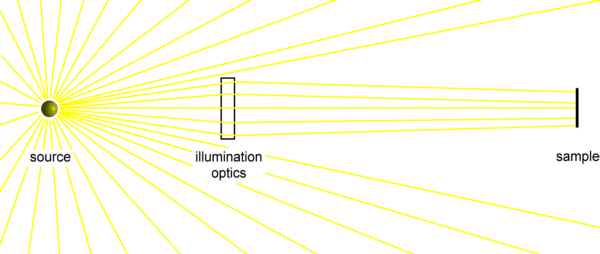X-rays can be used to illuminate a sample without any illumination optics. This is the case e.g. in medical X-ray imaging. The light emitted by the source hits the sample (e.g. broken leg), is partly absorbed and than hits the detector.
In many cases the intensity of the source will not be sufficient to get the information about the sample in satisfyingly short time. In these cases illumination optics can be used to reduce measurement time.

Illumination optics form the incoming X-ray beam in a way, the photon flux on the sample is increased. Mostly, the divergent beam of the source has to be collimated. In some cases (e.g. at synchrotron sources) illumination optics even focus the light on the sample. The characteristics of illumination optics differ concerning:
• the photon energy range they are suited for
• their focal length (mostly about 0.5 m to several metres)
• the intensity distribution achieved on the sample surface (homogeneous or point illumination)
• the intensity gain achieved


